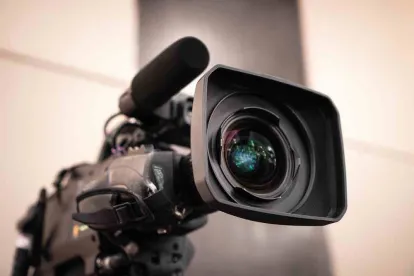The following telephone arguments will be available to the public live. Access information will be available by 10 AM ET each day of argument at: http://www.cafc.uscourts.gov/public-access-arguments.
Monday, August 30, 2021
Polaris PowerLED Technologies v. VIZIO, Inc., No. 20-2328
Polaris sued VIZIO in the Central District of California, alleging infringement of U.S. Patent No. 7,239,087 (“the ’087 patent”). VIZIO moved for summary judgment of noninfringement, arguing the accused products do not include the claimed “network of semiconductor switches coupled in series.” When the district court ordered claim construction briefing, Polaris proposed this phrase be given its plain and ordinary meaning. VIZIO sought a construction informed by an embodiment in the ’087 patent. The district court construed the phrase as “a collection of semiconductor switches connected one after the other such that current can flow from one switch to the next.” Applying this construction, the district court granted summary judgment of noninfringement. Polaris appealed.
On appeal, Polaris challenges the district court’s construction of “network of semiconductor switches coupled in series” and grant of summary judgment of noninfringement. According to Polaris, the district court’s construction improperly reads limitations from the specification into the claim. Moreover, Polaris argues, the district court’s construction is inconsistent with Federal Circuit precedent requiring “network of” to be an open-ended phrase and construing “coupled” to be broader than a direct physical connection.
VIZIO responds that Polaris’s proposed construction is inconsistent with the claim language and specification. VIZIO argues the district court’s construction reflects the plain and ordinary meaning of “coupled in series.” According to VIZIO, Polaris’s construction reads “coupled in series” out of the claim.
Thursday, September 2, 2021
In Re SurgiSil, L.L.P., No. 20-1940
SurgiSil is the assignee of U.S. Patent Application Serial No. 29/491,550 (“the ’550 application”), which claims an ornamental design for a medical-grade lip implant. During prosecution, the examiner rejected the ’550 application as anticipated by a design for an art tool, called a “paper stump,” disclosed in a Dick Blick® art supply catalogue. SurgiSil appealed the examiner’s rejection to the Patent Trial and Appeal Board, and the Board affirmed.
On appeal to the Federal Circuit, SurgiSil argues the Board’s decision is flawed because the Blick paper stump cannot anticipate the claimed design for a lip implant. According to SurgiSil, the Board erred by considering the scope of its claimed design as untethered to the recited article of manufacture. According to SurgiSil, Curver Luxembourg, SARL v. Home Expressions Inc. held that “design patents are granted only for a design applied to an article of manufacture, and not a design per se.” Under Curver, SurgiSil argues, its claimed design is limited to the recited article of manufacture, a lip implant. Because Blick’s paper stump is a wholly unrelated article, it argues, its design cannot anticipate the claimed design. The Board’s application of the Blick paper stump, SurgiSil argues, in effect considers the claimed design as a design per se, contrary to Curver.
The Patent Office responds that the claimed design is anticipated by Blick’s paper stump. According to the Patent Office, the Board properly applied the ordinary observer test of Egyptian Goddess, Inc. v. Swisa, Inc., which asks whether an ordinary observer would view the two designs, taken as a whole, to be “substantially the same.” The Patent Office argues substantial evidence supports the Board’s finding under this test that both designs have a cylindrical shape with conical ends, giving the claimed design substantially the same appearance as Blick’s paper stump. It argues SurgiSil cannot rely on non-ornamental features, such as the intended use of the underlying article of manufacture, to distinguish the Blick paper stump. Further, the Patent Office argues, Curver considered whether a design patent was infringed, not whether the claimed design was novel, and the differing standards used for anticipation and infringement suggest Curver should not be applied during examination. Lastly, the Patent Office argues, the drawing of the claimed design depicts the entire article of manufacture, unlike the drawing at issue in Curver, which was limited to a surface ornamentation on the article of manufacture. Where the entire article of manufacture is depicted in the claimed design, the Patent Office argues, the recited article of manufacture cannot further limit the scope of the claimed design.
Friday, September 3, 2021
In Re Singhal, No. 20-2318
Singhal is the inventor of U.S. Patent Application Serial No. 12/928,710 (“the ’710 application”), which describes a secure payment system and method that eliminates certain security risks of traditional payment systems. Filed in 2010, the ’710 application remains rejected as directed to ineligible subject matter under 35 U.S.C. § 101. After the Board affirmed the examiner’s rejection, Singhal sought rehearing but was denied. Singhal appealed.
On appeal, Singhal argues the claims are patent-eligible under § 101. According to Singhal, the Board failed to establish the claims are not eligible under the two-step Alice framework. At Alice step 1, Singhal argues, the Board erred in holding the claims are directed to the broad concept of securely processing payments. According to Singhal, the Board overlooked that the allegedly abstract idea is integrated into a practical application. Singhal argues that elements of the secure payment system have been shown to be improved by the invention. At Alice step 2, Singhal argues the Board treated the inventive concept of the ’710 application—transmitting a partial payment authorization record over a wireless communication network directly from a customer’s wireless device to a central system—as part of the allegedly abstract idea, instead of evaluating it on its own.
The Patent Office responds that the Board properly concluded the ’710 application is not eligible under Alice. It argues Singhal’s claims are directed to the abstract idea of securely processing payments, and the Board properly analogized Singhal’s claims to those found abstract in Inventor Holdings, LLC v. Bed Beth & Beyond, Inc. It argues the Board correctly found that Singhal’s claims do not recite an improvement to computer technology and Singhal’s assertion that an improvement to the security of a payment system is an improvement to a computer’s capabilities is flawed. According to the Patent Office, Singhal’s claims and specification make clear that they do not recite any improvement to the underlying technology of Singhal’s secure payment process, instead relying on off-the-shelf technology.
Sneha Nyshadham, a law clerk with Finnegan, Henderson, Farabow, Garrett & Dunner, LLP, contributed to this article.




 />i
/>i

